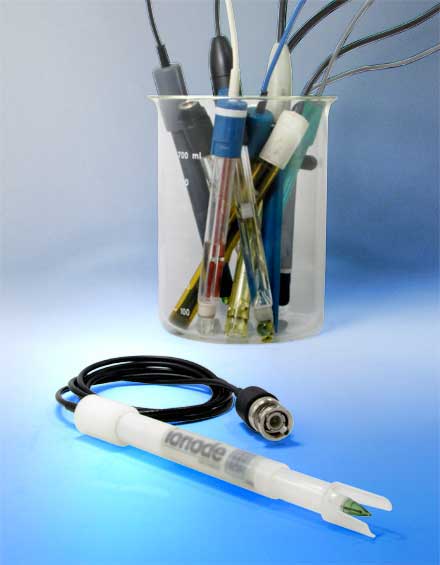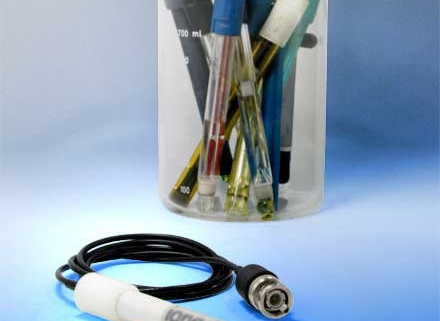pH Testing, Smokey Wines and A Sticky Situation! – Testing Times March 18
Smoke taint concerns from February bushfire in Orange

(Image Credit: Christina Bos)
Our NSW manager, Christina Bos, knew it was a bad sign for the local wine industry when she saw the columns of smoke rising off Mt Canobolas from her front veranda in Orange one weekend in February. For those that know this gorgeous region, the 1395-metre-high mountain looms large over the town and is host to many of the great and well-established vineyards in the region.
And of course the fire could not have come at a worse time as all the fruit was well advanced and the majority post veraison, the worst time for taint by smoke from bushfires. The region had been very dry and the fuel load on the mountain was high as no fires had been experienced in that spot for decades.
Much research has been done on smoke taint both here in Australia and overseas over the past decade and we know much more about it than we used to. The volatile phenols that are produced in smoke absorb into the grapes and can bind with sugars in the fruit. The resulting glycosides can be hydrolysed at a later stage in the life of the wine and give negative taste sensations. The unbound (free) phenols and the bound phenols can be measured to give an overall picture of the level of smoke taint. The bound phenols can also be released in the fermentation and so winemakers are encouraged to do small scale ferments to see the effect of the ferment on the glycosides.
Immediately after the fire broke out the locals and the DPI swung into action to advise the local vignerons on what was needed and how the grapes could be tested for smoke taint. We do a lot of this testing when it’s needed and so were able to offer advice on how to collect the samples and how to treat them prior to us doing the testing. At the time of writing this sampling and testing is ongoing and therefore nothing definitive can be put into print about the overall impact of the fire.
Smoke Taint testing for Berries, Juice & Wine
A Sticky situation
Just prior to vintage a customer sent in an unfinished wine from a previous vintage. It was a dessert wine with a stuck ferment and the winemaker was also a bit stuck as to what to do with it. It had high Volatile Acidity (VA), heaps of sugar, low alcohol and was taking up tank space.
The question asked was “what can I do with it?”. After we established some test data it was obvious the VA was well over the legal limit, the alcohol was very low, ethyl acetate was the highest we’d ever seen and sugars were in the hundreds of g/L.
There were several obvious choices including blend it off, have it processed by reverse osmosis to get rid of the acetic acid and ethyl acetate, or pour it down the drain. The winemaker did ask the question about refermenting the wine but this was considered not only quite difficult but with no guarantee of a quick result plus there was the ongoing concern about tank space needed very soon for 2018 vintage processing. We didn’t need to make the point that this should have been looked at a bit earlier…
Blending was the chosen route and the blend we saw recently had done the trick. The alcohol was up where it gave better balance, VA was nicely under the legal limit of 1.5 g/L, and sweetness was in a good spot for the style of wine desired. Upon tasting the blend, the highish ethyl acetate wasn’t obvious. With a little more tweaking this is going to be a quite acceptable sticky wine, and the tank will hopefully be free just in time for vintage.
The message from this little story is, if you have a problem wine, don’t ignore it and hope it goes away. Get advice on the available options and make some moves to resolve it, as our client finally did.
pH testing
Most winemakers measure the pH of their own juice and wine. It’s a relatively simple but important test and the equipment is not expensive. We, of course, also do this testing on a daily basis for lots of wines in our five laboratories but of course have to be very fussy to ensure we meet all the requirements of our NATA accredited quality system.
This time of year we receive lots of requests for checking and calibrating pH meters and electrodes and for the supply of new ones as well. It is important that those doing this pH testing understand that some electrodes are not suited for wine testing, so it is advisable to talk to a supplier who understands the chemistry of wine and the limitation of the electrodes they sell.

pH meters can last decades. There is little that goes wrong with them, assuming they are good quality ones to start with. Electrodes, however, do need looking after and have a relatively short life span. In our labs our electrodes don’t see out a year before they are disposed of – and we look after them fastidiously.
We consider the electrodes to be a low-cost consumable and a typical price tag of around $200 we see this as good value for money. I personally have seen electrodes in winery labs that are many years old, neglected, dried out and not fit for purpose – but still in use. This is a critical measurement and results can vary widely if a poor electrode is used. So consider how long yours will last and whether it needs replacing. We have previously written about how to care for electrodes.
If you want a good check on how you are going with your pH accuracy and other testing, it is recommended that you join the Interwinery Analysis Group (known as IWAG, see www.interwinery.com.au). For a few hundred dollars a year, there’s no better way to see how your results compare to others in the industry. As NATA accredited labs we have to be part of such a scheme and we have found that there is none better, nor as good value as IWAG. There is also an annual one-day conference and small trade-display that’s worth attending. Lab managers from most (if not all) larger winery labs are present, as are the major lab suppliers to wineries. It is highly recommended that all winery lab staff, no matter how small the winery, attend at least once. And yes, it has always been held in Adelaide/Barossa, although more complaints from interstaters who can’t get there might get the committee to think about holding it elsewhere for a change…



